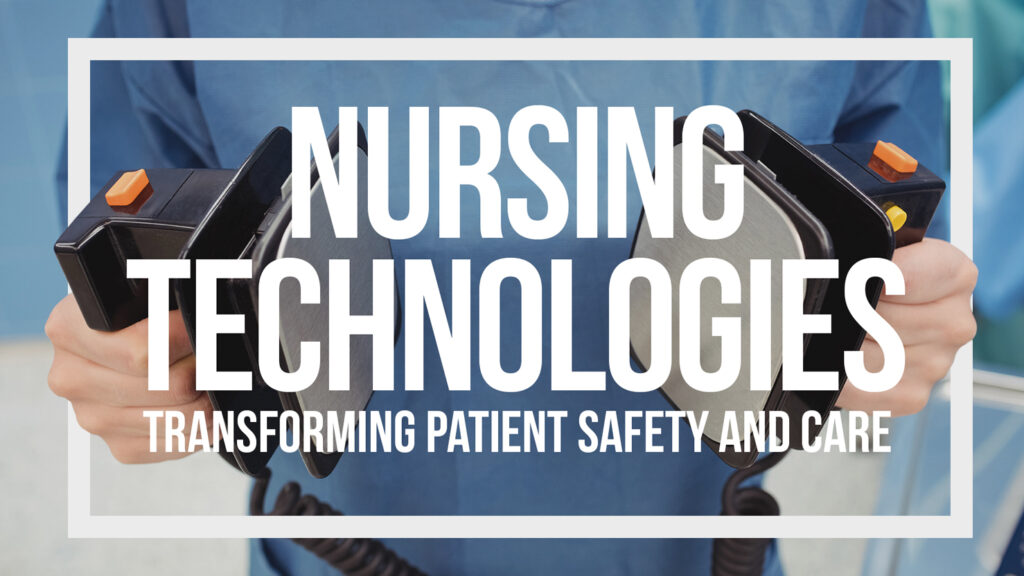Blog
Nursing Technologies Transforming Patient Safety and Care

Over the decades, no industry has embraced technology more closely than healthcare. Technavio’s IT forecast even shows that the global healthcare IT market is expected to grow 9% annually until 2024, putting its revenue at roughly $96 billion by then. Among the many uses for technology in the industry, such as medical imaging, those used in nursing will be some of the biggest contributors to this growth. After all, a lot of these technologies are there to improve the patient experience, which is a major concern for every healthcare facility in the U.S.
In fact, below are some nursing technologies that have made the most impact in patient safety and care.
Digital Rounding Solutions
Patient rounding allows the hospital staff to stay updated on the patients’ condition, improving outcomes. Commonly performed by nurses, rounds are done every hour or once a day, depending on the patient’s condition. Nowadays though, there are many digital solutions that help nurses conduct their rounds more efficiently. For example, VisibleHand’s mobile app essentially replaces the traditional clipboard, enabling across-the-board patient status monitoring. This function is further enhanced by the proximity verification ID bands, which can verify real-time patient location and automate attendance tracking.
The online digital rounding platform at University of Chicago Medicine presents a slightly different approach. Using a mobile app with a simple alert system, nurses documented patients’ vocal requests to shorten response time by care team members. This eliminated the problem of paper documentation being not readily accessible to care teams. They also used the tools to record caregiver conversations for patient recommendations as well as operational improvements.
Online Learning Resources
In patient safety and care, online education has its advantages and disadvantages. Mainly, while it has reduced opportunities for nursing students to get more hands-on experience, it has also significantly increased access to theoretical materials and coursework for both students and practitioners.
The Center for Disease Control’s free interactive online course on Workplace Violence Prevention for Nurses is proof of this fact. This and other similar courses are promoting essential safety skills through a platform that’s accessible to virtually every nurse in the U.S. The same can be said about today’s increasingly popular online degree courses, which are giving registered nurses (RNs) the opportunity to pursue specializations through online classes. Accredited by the Commission on Collegiate Nursing Education, the online RN to BSN degree at Maryville University is a streamlined program that allows RNs to train remotely for in-demand positions in nursing homes, hospitals, and home healthcare settings, as well as qualify for managerial nursing roles. By giving RNs more convenient opportunities to train in essential safety skills and in-demand specializations, these online courses and degree programs are also increasing competence for nursing practitioners across the board.
Telehealth Platforms
Also called telemedicine, telehealth platforms are allowing nurses and caregivers to extend treatment to low-acuity patients over remote communication and point-of-care devices. The Masimo Rad-97 Pulse CO-Oximeter is a good example of this, as the technology allows patients and hospital staff to contact each other remotely with compatible Patient SafetyNet software.
Through telehealth applications that enhanced communication between nurses and doctors, Falls Village Skilled Nursing & Rehabilitation has successfully reduced re-hospitalization rates. Elsewhere, other hospitals have used high-definition cameras and telemetry to develop ‘tele-ICU’ applications, which were particularly useful for pandemic response. And due to the rapid development of these remote monitoring and telehealth technologies, the security of these platforms has improved as well, particularly in terms of patient data safety and privacy.
Given recent developments, there’s no doubt that online learning resources will continue to play a key role in transforming patient safety and care in the future.
These are not the only technologies that are transforming these key aspects of healthcare. However, they’re the ones that are providing the foundations for other health technologies to develop and improve. We can certainly expect to see more healthcare technologies contributing to patient safety and care in the future.
Specially written for MMEMed.com
By: Reagan Jane
